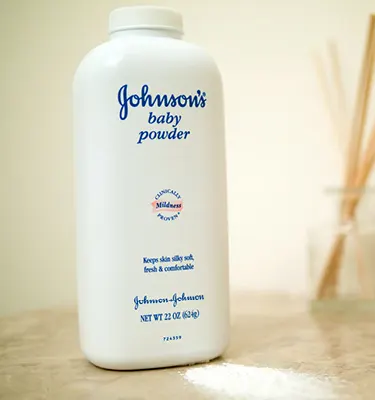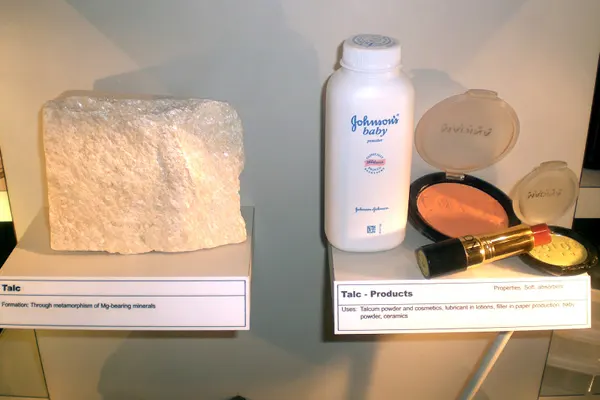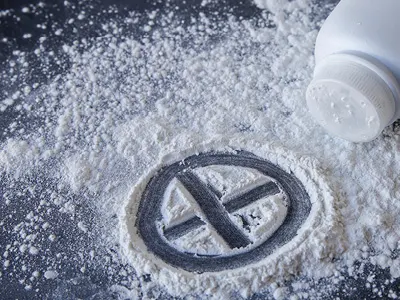March 2025 Update – Johnson and Johnson Talcum Power Lawsuit
As of March 2025, there are just over 58,000 participants in the Johnson and Johnson Talcum Powder MDL. Also as of end of March 2025, this case is stalled in Bankruptcy Court. This marks the third time that Johnson and Johnson has tried to use bankruptcy court to deal with settling these claims.
Until there is a ruling from the federal judge overseeing the initial bankruptcy proceedings, this case will remain stalled.
Johnson and Johnson has proposed an $8 billion dollar settlement, and claimed in October 2024 that this settlement was approved by 83% of plaintiffs. Some plaintiffs challenge the 83% claim.
September 2024: Johnson and Johnson’s subsidiary Red River Talc LLC Files For Bankruptcy
Johnson & Johnson’s talc unit, Red River Talc LLC, has filed for Chapter 11 bankruptcy. This is the third time Johnson and Johnson has tried to use bankruptcy as a method to resolve Talcum Powder lawsuits.
This time they filed in Texas, which some might argue constitutes “venue shopping” for a better court.
August 2024 Update – Johnson and Johnson Talcum Powder Lawsuit Settlement Approved
Johnson & Johnson Talcum Powder Lawsuits 2024 – The Johnson & Johnson talcum powder lawsuits have been a significant legal and public health issue for several years.
These lawsuits allege that Johnson & Johnson’s talcum powder products, including its iconic baby powder, were contaminated with asbestos, leading to various forms of cancer.

According to an article published by Reuters, Johnson & Johnson knew for almost thirty years about the presence of asbestos in their products.
Individuals filing lawsuits over talcum powder allege they developed cancer as the result of talcum powder use. They further claim that Johnson and Johnson knew about the potential risk and failed to warn consumers or take adequate action to correct the problem.
As of now, over 57,000 cancer lawsuits remain pending in federal court.
In May 2024, Johnson & Johnson proposed a settlement of approximately $6.5 billion to address its talc-related ovarian cancer claims. This is a unique attempt to settle, as Johnson & Johnson is attempting to resolve the cases through a bankruptcy proceeding. In July 2024 a vote was taken by plaintiffs to approve or disapprove the settlement.
In the third week of August 2024, the results of that vote were made public and over 75% of claimants approved the proposed settlement. This is above the threshold needed for the bankruptcy process to continue.
But as of the third week of August 2024, Johnson and Johnson has again attempted to file bankruptcy as the result of acceptance of the agreed upon settlement.
If the settlement ever reaches final approval, and the Defendant must pay – then the Johnson & Johnson Talcum Powder lawsuits will move into their final stages of settlement, which will include negotiations on how and when claimants will be paid.
It is important to remember that settlement does not equal payment. In settlements of this magnitude, defendants are sometimes given up to ten years to pay what they owe.
In addition, some plaintiff’s payments will be given preference and priority over others. Because of this, it is not easy to know when a person will receive their money from a class action lawsuit.
History of the Talcum Powder Lawsuits
Early Concerns and Initial Lawsuits Over Asbestos in Talcum Powder
Concerns about the safety of talcum powder products date back decades. In the early 1970s, scientific studies began to suggest a possible link between talc and ovarian cancer.

Despite these findings, Johnson & Johnson continued to market their talcum powder products, citing their own research that showed no such connection.
The first significant wave of lawsuits began in the early 2000s, with plaintiffs claiming that their use of Johnson & Johnson’s talcum powder products led to ovarian cancer.
These early cases were often dismissed or settled quietly, but they set the stage for more substantial legal challenges in the years to come.
The Asbestos Allegations

The most serious allegations against Johnson & Johnson concern the presence of asbestos, a known carcinogen, in their talcum powder products.
According to the Center for Mesothelioma, there is NO safe exposure to asbestos. Even a short but intense exposure to asbestos can have long term health effects.
But more importantly, repeated exposure to asbestos often leads to serious long term health consequences and some of the most terrible types of cancer to suffer from including Mesothelioma and Asbestosis.
Additionally, the more you break down asbestos into fine dust and/or powder, the more dangerous it becomes. Now think about those people who used talcum powder squeezing that white powder dust into the air every single day. You can begin to see the problem.

Internal company documents revealed during litigation suggested that Johnson & Johnson was aware of the potential asbestos contamination as early as the 1970s but failed to disclose this information to consumers or regulatory authorities.
This revelation led to a surge in lawsuits and increased public scrutiny.
The CT scan at left shows a large mesothelioma tumor surrounded by yellow arrows in the space that should be the left lung.
Key Allegations
Asbestos Contamination in Talcum Powder
The central allegation in most of these lawsuits is that Johnson & Johnson’s talcum powder products were contaminated with asbestos, causing various forms of cancer, including mesothelioma and ovarian cancer.
Plaintiffs argue that Johnson & Johnson knew about the contamination risks but chose to conceal this information to protect their brand and market share.

Failure to Warn Consumers About Potential Health Risks of Talcum Powder
Another critical allegation is that Johnson & Johnson failed to warn consumers about the potential risks associated with talcum powder use.
Despite mounting scientific evidence and internal concerns, the company continued to market its products as safe, particularly for use on infants.
Misleading Marketing
Plaintiffs also accuse Johnson & Johnson of engaging in misleading marketing practices. The company heavily promoted its talcum powder products as pure and safe, particularly targeting mothers and infants.
This marketing strategy allegedly downplayed or ignored the potential health risks, leading consumers to use the products without fully understanding the potential dangers.
Major Settlements and Verdicts
Early Settlements
In the early stages of litigation, Johnson & Johnson opted to settle many cases out of court to avoid lengthy trials and negative publicity.
These settlements often included confidentiality agreements, making it difficult to gauge the full extent of the company’s legal liabilities.

Landmark Verdicts
Several landmark verdicts have significantly shaped the trajectory of the Johnson & Johnson talcum powder lawsuits.
One of the most notable cases occurred in 2018 when a Missouri jury awarded $4.69 billion to 22 women who claimed that Johnson & Johnson’s talcum powder products caused their ovarian cancer.
This verdict included $550 million in compensatory damages and $4.14 billion in punitive damages, signaling the jury’s belief that Johnson & Johnson acted with reckless disregard for consumer safety.
Recent Settlements
In recent years, Johnson & Johnson has proposed several large-scale settlements to resolve the ongoing litigation. In 2021, the company proposed a $2.1 billion settlement to resolve thousands of lawsuits.
However, this proposal faced legal challenges and was ultimately rejected by the courts.
As of August 2024, Johnson & Johnson has garnered sufficient support from over 57,000 claimants for a proposed $6.5 billion settlement.
The settlement was put to a vote and the vote was finalized near the end of July 2024 and the result of the vote was made public at the end of the third week of August 2024.
Recent Developments
Bankruptcy Strategy
Throughout this process, Johnson and Johnson have repeatedly tried to declare bankruptcy. Courts have rebuffed attempts to use bankruptcy as a shield against lawsuits, and new cases continue to be filed.
To manage its legal liabilities, Johnson & Johnson has employed a controversial strategy known as the “Texas two-step” bankruptcy. This involves creating a subsidiary (Red River Talc LLC in this case) to absorb the legal liabilities and then filing for bankruptcy for that subsidiary.
The goal is to limit the financial impact on the parent company while providing a structured process for settling claims.
However, this strategy has faced significant legal challenges and backlash from plaintiffs and consumer advocacy groups. Plus, judges have repeatedly denied bankruptcy motions saying “You can’t declare bankruptcy in anticipation of bankruptcy.”
But, it appears as though Johnson and Johnson will attempt the bankruptcy avenue again now that 83% of plaintiffs voted to accept the $8 Billion settlement. Almost as soon as the results of the vote were announced, Johnson and Johnson again attempted to file bankruptcy – claiming that now that the vote was approved they can’t afford to pay.
This strategy has become so prevalent, that there has been a proposed bill in the senate called the Nondebtor Release Prohibition Act – which would attempt to put an end to this controversial bankruptcy practice that allows big companies and rich people to sidestep liability by simply creating a new entity which they can immediately say doesn’t have the funds to pay, and is therefor bankrupt.
Ongoing Litigation
Despite proposed settlements and bankruptcy strategies, Johnson & Johnson continues to face ongoing litigation.
Recently, an Oregon jury ordered Johnson & Johnson to pay $260 million to a woman who claimed that her mesothelioma was caused by the company’s talcum powder.

Impact on Consumers
Health Risks
The allegations against Johnson & Johnson have raised significant public health concerns.
Consumers who have used talcum powder products, particularly those with a history of prolonged use, are now more aware of the potential risks.
Many have undergone medical screenings and consultations to assess their cancer risk.
Consumer Trust
The lawsuits have also eroded consumer trust in Johnson & Johnson, a company long associated with safety and reliability.
The revelations about potential asbestos contamination and the company’s alleged failure to disclose risks have led many consumers to question the safety of other Johnson & Johnson products.
Market Impact
The ongoing litigation has had a considerable impact on Johnson & Johnson’s market presence.
The company has ceased selling its powder products with a talc base in the United States and Canada, although the talc-based products remain available in other markets. In the United States and Canada, the powder products are still sold, but now have a cornstarch base, instead of talc.
This decision was influenced by declining sales and increasing regulatory scrutiny.
Talcum Powder Lawsuit Impact on Johnson & Johnson
Financial Consequences
The financial impact of the talcum powder lawsuits on Johnson & Johnson has been substantial. The company has already paid out billions in settlements and legal fees, with more costs expected as litigation continues.
These financial burdens have affected Johnson & Johnson’s stock price and investor confidence.

Reputation and Brand Image
The lawsuits have also tarnished Johnson & Johnson’s reputation. Once seen as a trusted household name, the company now faces significant brand image challenges.
Efforts to rebuild consumer trust and restore its reputation will likely take years and require substantial investment in public relations and marketing campaigns.
Regulatory Scrutiny
The talcum powder lawsuits have prompted increased regulatory scrutiny of Johnson & Johnson and the broader cosmetics industry.
Regulatory bodies are now more vigilant about product safety standards, labeling requirements, and the disclosure of potential health risks.
This increased scrutiny may lead to stricter regulations and oversight in the future.
A Balanced View:
Johnson & Johnson’s Defense
Johnson & Johnson has consistently defended the safety of its talcum powder products. The company argues that extensive scientific research supports the safety of its products and that the allegations of asbestos contamination are unfounded.
Johnson & Johnson also points to the fact that regulatory agencies, including the U.S. Food and Drug Administration (FDA), have not confirmed the presence of asbestos in its talcum powder.
Scientific Debate
The scientific community remains divided on the link between talcum powder and cancer. While some studies suggest a possible association, others find no conclusive evidence.
This ongoing debate adds complexity to the lawsuits and makes it challenging to reach a definitive conclusion.
Legal Expert Opinions
Legal experts have varied opinions on the Johnson & Johnson talcum powder lawsuits. Some view the large verdicts and settlements as a necessary means of holding corporations accountable for product safety.
Others argue that the litigation has been driven by aggressive plaintiff attorneys and may set a problematic precedent for future product liability cases.
Conclusion Johnson & Johnson Talcum Powder Lawsuits
The Johnson & Johnson talcum powder lawsuits represent a complex and multifaceted legal saga. From early concerns and initial lawsuits to major settlements and ongoing litigation, these cases have had a profound impact on consumers, the company, and the broader cosmetics industry.

As the legal battles continue, the ultimate resolution remains uncertain.
However, the lawsuits have already prompted increased awareness of product safety and the potential health risks associated with talcum powder use.
For Johnson & Johnson, rebuilding consumer trust and navigating the financial and reputational challenges will be a long and arduous journey.
For plaintiffs and their attorneys, many of them could be near a final settlement approval, and then will come the final process of determining who will receive their settlement and when.
It is important to point out that in many cases, settlements of this size are often paid out over five to ten years. This is particularly true of monetary compensation.
However, medical bills and approved medical treatment may be covered more quickly to provide immediate relief for plaintiffs who are suffering physical ailments as a result of talcum powder use.
Post Settlement Funding for Johnson and Johnson Talcum Powder Lawsuits
Plaintiff Attorneys involved in the Johnson and Johnson Talcum Powder Litigation may be interested in seeking post settlement funding now that the case appears to be headed to settlement.
Balanced Bridge Funding offers post settlement funding to plaintiff attorneys representing clients in the Johnson and Johnson Talcum Powder Litigation.
If you are an attorney and you are interested in learning more about post settlement funding for talcum powder lawsuits, please contact one of our financial specialists to learn more or apply for post settlement funding for attorneys.
To talk to one of our legal funding specialists about getting help managing your law firm’s cash flow, please call (267) 457-4540 or email info@balancedbridge.com.
Or to apply online, simply CLICK HERE and fill out our quick application to get started.
About the Authors
Balanced Bridge Funding offers legal funding solutions for plaintiff attorneys, plaintiffs,
attorneys, and law firms.







